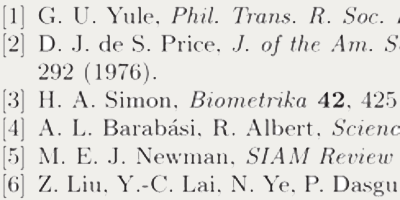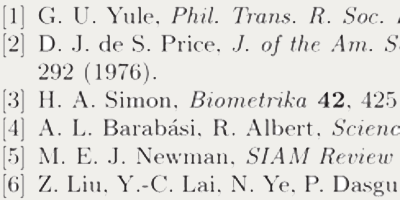You Don’t Cite Me Anymore
Simple models of citation statistics assume that highly cited papers have a better chance of being cited in new papers. However, this preference does not last very long, as evidenced in a new study in Physical Review Letters that examines data from American Physical Society (APS) journals. The authors show that citation models perform better when they account for the way the relevance of a paper decays with time.
As scientists well know, not all papers get cited equally. An often-cited work typically attracts more citations, reflecting the economic maxim of “the rich get richer.” This so-called preferential attachment should yield a smooth power-law distribution in the number of citations to each paper, but literature studies reveal a greater complexity, in part because papers age. Classic treatises from Einstein or Hawking, for example, are no longer cited as they once were. The same is true for other growing networks like the internet, where old web pages attract fewer and fewer links.
Matúš Medo and his colleagues from the University of Fribourg in Switzerland sought to address this age-dependence. They first investigated the citation statistics of 450,000 papers from APS journals that were published between 1893 and 2009. They found that a paper’s relevance—defined by how many new citations it receives over a given period—decreases dramatically a few years after its publication. By introducing a decaying relevancy factor, the team produced a generic model that could fit a wide variety of network behavior, including the citation distribution of papers from APS journals. – Michael Schirber





